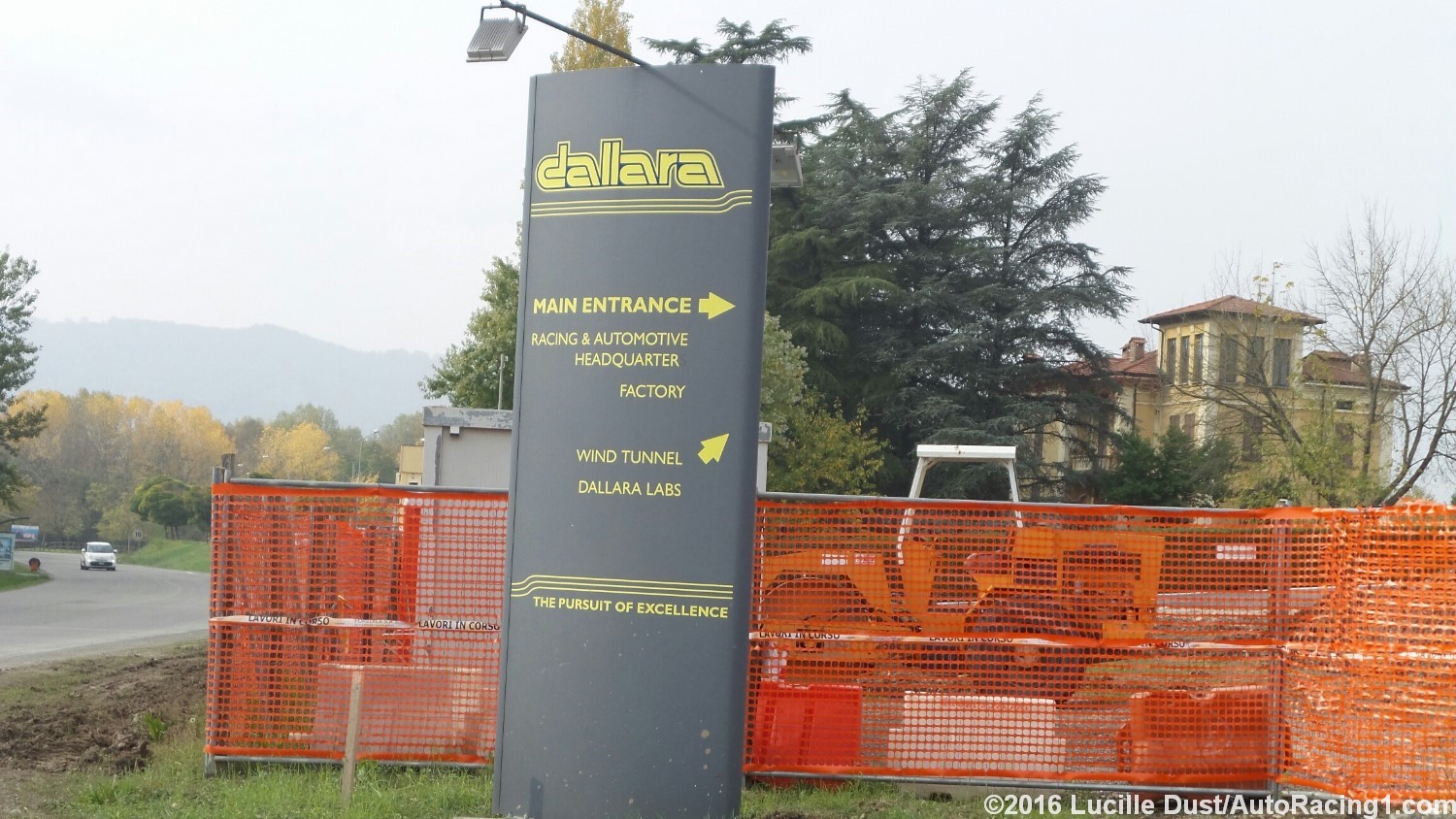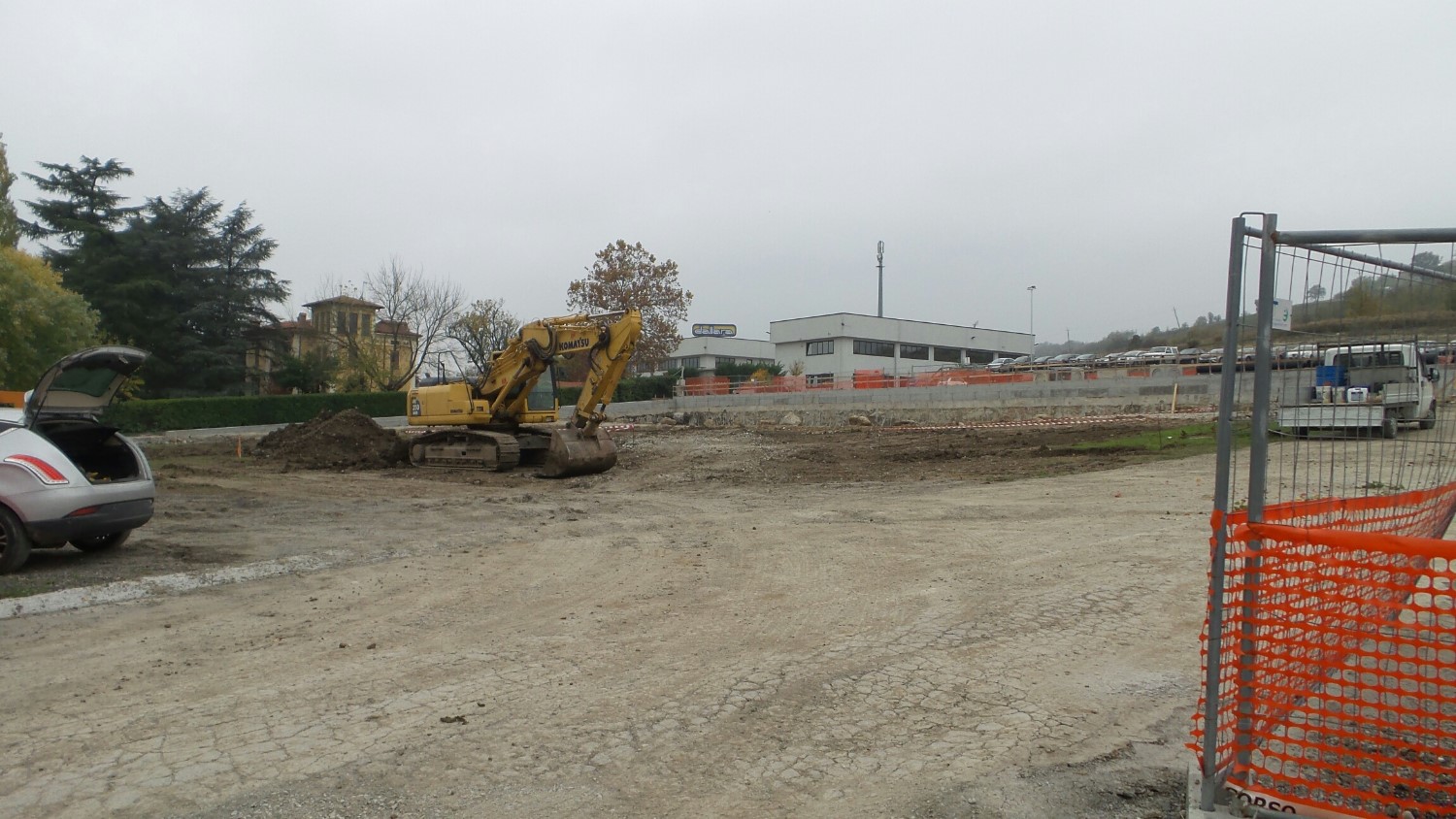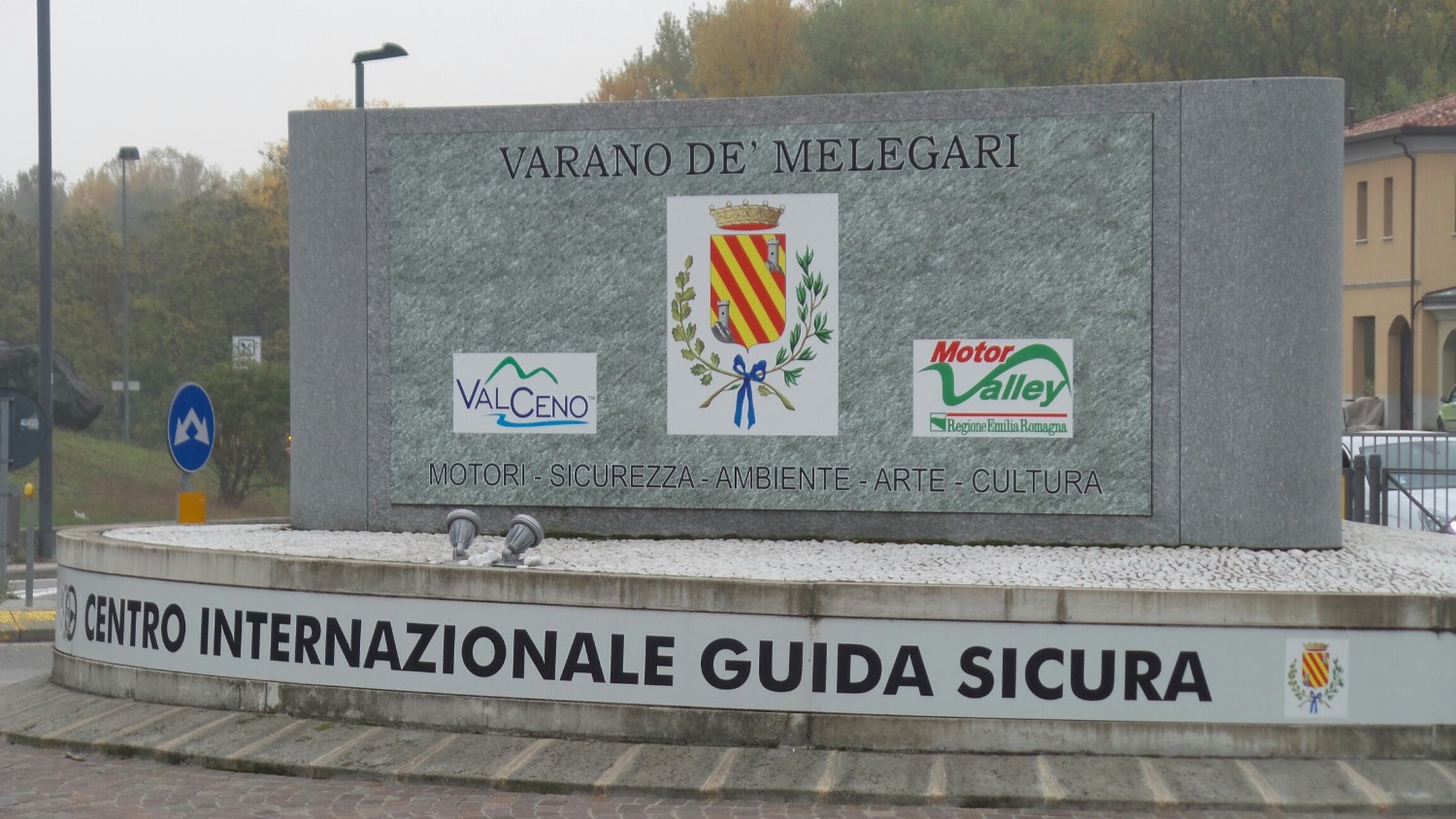A visit to Dallara’s factory in Italy – Part 2
 |
| Main entrance to Dallara |
In our Part 2 of our 2-part series, today we are going to explore the expanding world of Dallara's Headquarters in Italy. Driving into the facility, you can see half of the buildings are obstructed by construction equipment moving earth and a few small trees. There is a new building being constructed in front of the current buildings that will be used for various uses.
There will be an area where the engineers are prepped for Motorsports, an area dedicated to students so they can be taught how physics can be applied to racing activities, and an exhibition center for all the cars that made Dallara's history. This building will be completed in late 2017. The bid went out to 15 different architects so it should be a beautiful building according to our tour guide, Alberto Bassi, Director of Communications and Marketing at Dallara.
Bassi has been employed by the company for 3 1/2 years. He speaks English, Italian and Varano dialect. Much to my disappointment, photography of any areas inside any building was prohibited. So there will be no pictures except outside the facility.
Bassi explained that we are in the Italian Motor Valley which is a 150 kilometer circle, with the center in Bologna, Italy. Within the circle you can find Dallara, Ferrari, Maserati, Ducati, Lamborghini and the Ferrari Formula One team, Toro Rosso, all on the same road – the Via Emilia. And a large network of providers of parts for Dallara are also located in this Valley.
There are 6 buildings for different phases of the design and build process on the premises. The simulator, the wind tunnel, D.A.R.C. (Development and Research Center), Consulting Services, Headquarters and the Buguetta Building. Each building has key coded entry and closed circuit cameras to protect the confidentiality of their customers.
 |
| Construction everywhere |
Our tour starts in the production department. Bassi explains, "Because inside our headquarters in Varano, Italy, we have the capability but not the capacity. So we make here only the first car of each series that we provide. Then we have to collaborate with our suppliers to provide the serious parts. So we have a network of suppliers that provide us with the parts and the assembly of the cars for the European side is made here. And for the US side, the cars are assembled in the IndyCar factory in Speedway (Indianapolis), Indiana."
"Since we have no production line, everything is in production. So when we have to work with metal parts, we have a carpentry department that is able to make parts with metals in case of need. We also have a small shop here that is dedicated to prototyping. And then we are able to produce from this crew, the entire race car, except for the engine and the gearbox. And we are able to make everything here, but we make only the first car of a run."
"We are growing in terms of environment, but this is the part dedicated to production here in this building. However, we also have a production plant that is in Collecchio, Italy, about 20 kilometers away, a supplier that we have worked with since 2014. We have 150 people that are dedicated only to produce parts for our team. We have 600 employees altogether, including the US."
[adinserter name="GOOGLE AD"]As we walk though the production department, you can see parts of cars from various series sitting in the walkways. At the back of the building is the parts department. Bassi continues, "This is our warehouse, a part of our warehouse that is dedicated to customers. Every customer has to come here in Europe to pick up his car. We don't make deliveries."
"We have a part of our QC department here also. If a component comes from a supplier, the first step is it goes to the QC department to check if it is compliant with our needs. If it is OK, we put a green dot on the part and we then add the Dallara logo and a serial number. So we can check if this part has the right mileage because we want to make it serious. The car has to run multiple years and we have to check if the components are safe on track. We also protect the safety of our customers and driver, so we have to check that they use the components in the right way."
Bassi explained that they have a way to assess all their suppliers. "If the component is not compliant with our needs, we give back the component to the supplier and they have to reproduce it. If they are not able to do it, we change the supplier."
"We are moving the department that makes parts that are dedicated to carbon fiber to a brand new research center."
We walk out one building and into a brand new one that is still fairly empty in the dock area. There is a large autoclave in this building, which is one of 8 autoclaves on premise. This one is large enough for one entire chassis of a high performance road car. There are also climate controlled rooms that line one side of the hallway.
And then we entered the clean room, where employees are creating carbon fiber pieces and molds. Bassi continues to explain the carbon fiber process.
 |
| Local Varano Monument |
"When you have a brand new car, it takes 9 months to produce. Eight months are for the design of the car and one month is for the production of the components and for the assembly. The eighth month of the design ends with a document that is called the "play book". It is a special computerized instruction manual to document every component of the car. This is the first material part of the car."
"Every component of the car is made of carbon fiber. We use that material because of it's three main characteristics. The first one is the lightness, the second one is the stiffness and the third one is the capability of absorbing energy in case of impact. If we make a race car that is only stiff, maybe it would be the quickest car on the racetrack but it will not be a safe car. So we design everything to collapse. The main goal of the carbon fiber is to destroy itself, dissipating the energy generated by the impact. The only part that must resist this impact is the safety cell, the only part of the car that cannot collapse. The safety cell is where the driver sits."
"At the end of the day, making carbon fiber components is like making lasagna, the layers are the noodles, the glue is the Ragu and we cook it in the autoclave", Bassi joked with us.
We leave this building and walk outside, where Bassi points to the Consulting Services for the automotive industry building. We are not allowed to enter that area because of the confidentially of the projects. So we cross the driveway and enter the last building, which houses the aero and the prototyping department. In the prototyping room where the resin molds are produced with CAD software on computers in the design room. Everything is automated and there are seven 3 dimensional printers that create the molds for the components.
Much to our disappointment, we were not even allowed to peek at the secret wind tunnel. Bassi did show us the layout of the room and explain that the fans are capable of generating 1000 horsepower for testing the model scale cars. The model car must have exactly the same shape of the real car.
Then our final place was the simulator room. The simulator looks like a science fiction robot or a space ship. There are only 3 of these machines in the world, Dallara has one here in Italy and one in Indianapolis. The third one is in Maranello, Italy at Ferrari. Bassi explained the main difference between Dallara's and Ferrari's machines is that Ferrari uses the software that came with the simulator and only uses the machine for Formula One activities. And they don't allow visitors to see their simulator. Dallara has internally developed their own software.
Bassi continued explaining the uses of the simulator. "Developing our own software allows us to train a driver on a certain track, or they can practice driving on a track that is not available year round, like St Petersburg or Monte Carlo. And two, engineers can come here and they are able to make setups for a race with the simulator. So they can make up for a short testing session or one that is interrupted by weather. Then we added one thing more. The simulator is able to allow the possibility to test a car that does not exist yet. Which means, you can test your idea before investing money into the design. One day on the simulator is like 2 weeks at a track."
I have been fortunate to see the simulator in Speedway during a tour given to the CART reunion attendees. So I have seen two of the three machines! I was able to get a picture of the simulator at that tour.
I would like to extend a gracious thank you to Stefano dePonti, Alberto Bassi and Angelica Dallara for making this tour possible. I hope our readers enjoy learning more about the Dallara Italy factory through my eyes.
